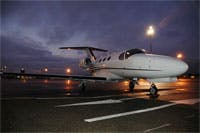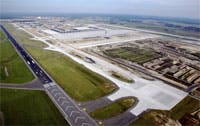Relocation, relocation: How to move an airport

On 3rd June 2012 Berlin’s new Brandenburg Airport will open, combining Berlin’s Tegel, Schoenefeld and Tempelhof Airports.
How do you move an entire multi-million passenger airport within a few hours of one night, when there is no room for any errors?
PrivateFly looks at past airport moves and why airports have to move.
Why do Airports have to move?
The most common reason for older airports to relocate is a shortage of space to grow and adapt to the challenges and requirements of modern aviation.
Debates often arise whether to build a new airport at a different location or to upgrade the existing infrastructure.
Airports that once marked the outskirts of a city are now entirely surrounded by buildings and living areas, restricting their opportunity for growth.
At the same time, the concept of air travel has changed: larger aircraft require longer runways and more space between them to continue a fully independent operation of two parallel runways.

Larger aircraft, such as the Boeing 747 can carry more than 400 passengers, of which many are likely to connect to onward flights. The airport needs the space for aircraft of this size and the space and facilities to handle increased numbers of passengers.
Berlin’s Tegel Airport currently has capacity for 12 million passengers, it handles however more than 15 million passengers a year already and was never designed to do so back in 1948.
The airport has simply no space for any further terminals or runways to reduce the queues of passengers waiting as well as aircraft waiting to take-off.
Expanding Tegel was difficult and unpopular amongst local residents.
Is there a new concept of Airport?
The demands for contemporary airports are much different to those of airports built in the 1950s, 1960s and 1970s.
Today’s modern airport is a hub and generates a high amount of transit passengers.
A hub design requires more space. Lounges, lavatory facilities, shops, restaurants and bars are required for the high number of waiting passengers. The design should also funnel passengers through short routes for fast flight connections.
Retail is now essential in airport design as it has become the “cash cow” behind the aviation industry.
Security Checks also are now far more thorough and require equally more space for an efficient operation.
Past Airport Relocations
A significant number of major airports have now relocated.

Hong Kong moved from its famous Kai Tak Airport to its new Chep Lak Kok Airport built on an artificial island in 1998. The transition was so smooth as the last aircraft took off from Kai Tak as the first to land at Chep Lak Kok was touching down.
At the time of its closing, Kai Tak – famous for its low approach over the Kowloon Bay skyscrapers – handled almost 30 million passengers a year.
Munich swapped airports from Riem to Franz Josef Strauss in 1992. In a clean logistical move, Munich’s main motorway was closed to allow the caravan of ground handling services to migrate to the new site, including buses, passenger stairs, towing trucks, luggage handlers, catering trucks and fire engines.
While Hong Kong and Munich airports are very different operationally, they are some of the fastest growing airports in their regions and often win Airport awards for their service and reliability. Both airports have the option for further expansion.
Will London Heathrow be moved?
Heathrow (originally built in 1930) does not have the required space to expand. Surrounded by London’s bloodline – the M25 motorway and the city’s 8 million inhabitants it has nowhere else to grow. But with an estimated 76,000 jobs dependant on Heathrow, it has become a complicated political debate.
No matter how soon the Heathrow decision is made, it comes too late. London Air Traffic has already hit capacity and and any disruption, such as bad weather, results in travel chaos.
Building new airports takes time. Berlin’s Brandenburg Airport has been Europe’s largest construction site for the past six years, and planning started as early as 1994.
Regardless of whether the Thames Estuary Airport will be built or not, it is not going to be a solution for the next twenty years to come.
Read my blog on moving London’s Airport
Private Jets and Airports

One the advantages of flying by private jet is that you can avoid major airports, and fly from your local airport.
However for private jet to scheduled airline connections often flying into a main airport is the most convenient option.
For private flights to or from Berlin Brandenburg airport (or any airport worldwide) please call +44 (0) 1747 642 777.


